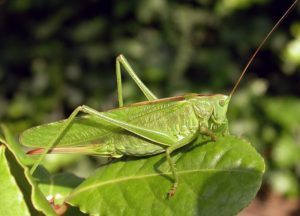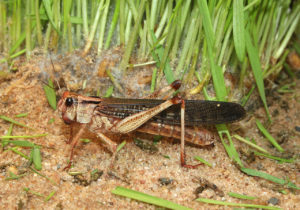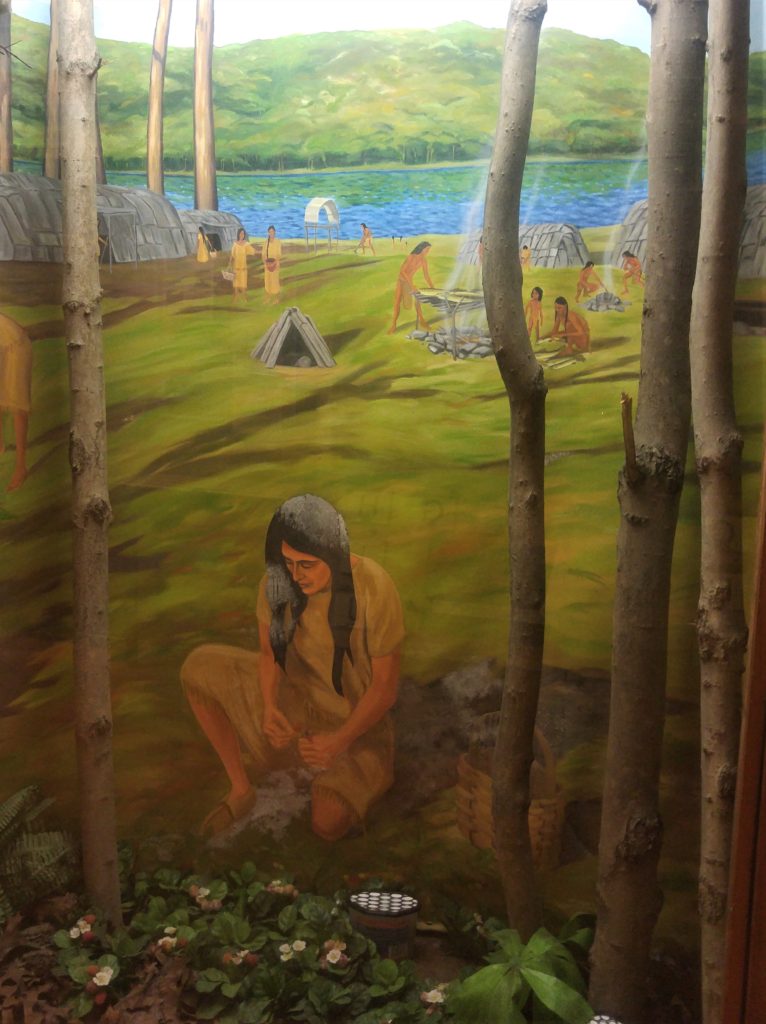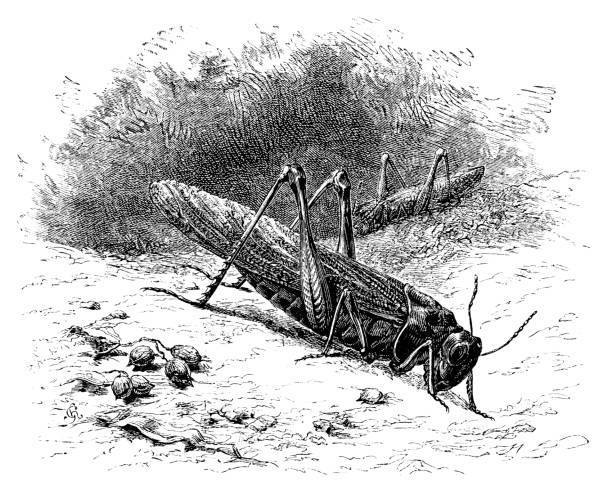A childhood squabble over a remarkable insect led to the ‘Grasshopper War’ in Upper Bucks.
While looking over old historical records, I recently came across a Native American folktale of what has come to be called the Grasshopper War of 1730. Possession of a particularly beautiful grasshopper resulted in bloody conflict between two Lenape Indian villages in Upper Bucks with unforeseen consequences.
The story attracted my curiosity because grasshoppers were an annual feature of my childhood in the central valley of California. Out there, they’re known as locusts for their tendency to swarm in the summer. I remember the hoppers as large and tan in color, a perfect camouflage in the desert-like environment. The fascination for us kids in Merced was the insects’ ability to blend in with the ground until they hopped away as you approached on foot. My neighborhood pal Adrian whose parents came from Mexico offered me a toasted locust as a crunchy, high protein snack. Called chapulines, they are popular in some areas south of the border. Unlike me, Adrian seemed to enjoy them.


Cooking up some grasshoppers for a Thanksgiving hors devour had nothing to do with the Grasshopper War in Upper Bucks however. The Eastern grasshopper is unlike a California locust in two ways: They’re green and don’t swarm. What happened in 1730 in Bucks began innocently enough in the Lenape village of Pechoqueolini, according to Indian lore. The settlement once existed where Gallows Run enters the Delaware River not far from present day Kintnersville. Peaceful relations existed between Pechoqueolin and a Lenape settlement on the far side of the river in the area of present day Flemington, N.J. Residents of both villages enjoyed trading visits on a regular basis.

“The men of the villages would hunt together, the women of the villages would work together, and the children of the villages would play together,” according to a narrative posted to American-Tribes.com, an interactive website devoted to Native American history. “One day, as the children were playing together (in Pechoqueolin), a boy from the village across the river saw a streak of green in the grass and, following it, soon caught the largest grasshopper he had ever seen. He laughed happily as he played with his new pet and soon a group of the other children gathered around him. He showed them the grasshopper and how agile it was. They all agreed that it was the largest grasshopper they had ever seen.”
One of the Pechoqueolin boys became envious, desiring to own the creature since it was found in his village. So he snatched it and fled. Other boys gave chase. A fight between them ensued. Soon altercations broke out among all the children of both villages, each siding with his or her clan. “Hearing the screams of the battling children,” according to American-Tribes, “ the village women rushed from the fields and lodges where they were working. Seeing their children attacking one another, they too joined the battle and began defending their children. Soon they too were pummeling one another and pulling hair.”
When the men out hunting returned to Pechoqueolin, they discovered women and children bruised, bleeding and exhausted from the melee. Questioned by tribal elders, no one could pinpoint what started the fight. All they knew was being attacked by members of the opposite clan. That fanned further suspicion, angering the men. Chiefs of both villages vowed retribution and the battle was re-engaged. By nightfall, hostilities ceased. Villagers took a look around and were appalled by all the damage and injuries. What triggered the mayhem remained a mystery.
“It was many seasons later that the truth was discovered,” according to American-Tribes. “What had begun as child’s play and a jealous argument grew into an unnecessary fight and long seasons of discontent between the two villages. Friendships were lost and much unfounded anger was exchanged. And this fight is remembered in our histories as ‘The Grasshopper War’. A simple argument between boys had led to a battle between friends. Quilt filled their hearts. They decided in order to keep the peace it was best if the two villages went their separate ways. Thus began the Shawnee and Delaware (Lenape).”
What is probable, according to my research, is the Lenape inhabitants of Pechoqueolin left behind all the ill-feelings of what happened on the Delaware by journeying west to join the nomadic Shawnee tribe. Europeans had come into contact with them as far back as the 1500s in the Eastern woodlands from Canada to South Carolina and as far west as the Mississippi River. In 1745 – 15 years after the Grasshopper War – some 400 Shawnee migrated from Pennsylvania to Ohio, Kentucky, Alabama and Illinois to join other members of the sprawling tribe. Refugees from Pechoqueolin may have been among them.
Sources include “The Grasshopper War” posted online under the Eastern Woodlands link found at www.american-tribes.com

